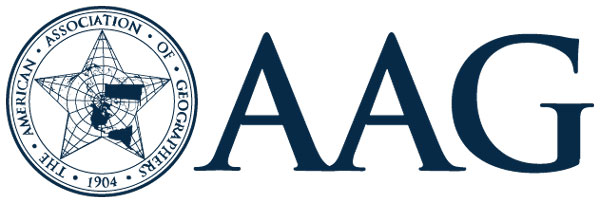Positioning Your Academic Unit for Success: Advice from Senior Administrators

By Jon Harbor and Risa Palm

 This column is the second in a series from the AAG Healthy Departments Committee that is focused on ways to ensure higher education futures include robust, healthy geography programs. In this column, Risa Palm and Jon Harbor, two geographers who have served as deans and provosts across several types of institutions of higher education, provide their perspectives on positioning an academic unit for success. In the previous column, David Kaplan set the scene with “Departments in Peril: How Can the Healthy Departments Committee Help?” He noted that “while the promise of geography is great and the demand for geography is clear, our overall institutional health is in jeopardy,” and provided a thoughtful review of recent and long-term trends, strategies, and actions.
This column is the second in a series from the AAG Healthy Departments Committee that is focused on ways to ensure higher education futures include robust, healthy geography programs. In this column, Risa Palm and Jon Harbor, two geographers who have served as deans and provosts across several types of institutions of higher education, provide their perspectives on positioning an academic unit for success. In the previous column, David Kaplan set the scene with “Departments in Peril: How Can the Healthy Departments Committee Help?” He noted that “while the promise of geography is great and the demand for geography is clear, our overall institutional health is in jeopardy,” and provided a thoughtful review of recent and long-term trends, strategies, and actions.
It is essential for leaders of geography units (departments, schools, programs) to ensure that their senior administrators understand the significance of their unit’s contributions to achieving the overarching goals of the institution, including their key accomplishments, stable management, and performance on key metrics. This understanding and the data that support it are key to maintaining the investments that drive positive outcomes. In this column, we will suggest 10 strategies to position an academic unit for success.
1. Clearly Articulate Your Unit’s Mission and Vision
Ensure that your unit’s mission and vision are well defined and easily understandable by people outside of geography. Craft a clear and compelling narrative that communicates how your unit contributes to advancing the institution’s goals — and always be ready to give a well-practiced ‘elevator pitch’ version of this when a senior administrator asks about your unit.
2. Align with Institutional Priorities
Stay informed about your institution’s strategic priorities and initiatives and participate in the planning for setting those priorities, whenever possible. Regularly assess how your unit’s activities align with these priorities and be among the first to volunteer to engage in key new initiatives. Senior administrators are more likely to invest in areas that they know are delivering on the institution’s strategic goals and are leaders and early adopters in new initiatives. Stay particularly involved in any work to update core requirements, so that the department is positioned to maintain healthy undergraduate enrollments.
3. Communicate Achievements and Impacts
Regularly provide evidence of your unit’s achievements and the impact geography is having on students, the community, the institution’s priorities, alumni, and other key audiences. Share success stories, awards, breakthroughs, and noteworthy collaborations — this is not a time to be shy. The institution’s news and communications staff need good stories all the time: if you regularly reach out to them, they will start to seek out your unit for future highlights. Use unit newsletters and social media to showcase ongoing projects and accomplishments of students, faculty, staff, and alumni. Invite administrators to unit events and send them the unit newsletter and social media highlights. Keeping administrators informed fosters a sense of transparency and helps them understand the value geography brings to the institution.
4. Work on Key Metrics
Be fully aware of your unit’s performance on the key metrics that administrators track and use as data to drive decisions. And work to improve these metrics relative to other units on campus and national comparative data. If you are not sure what these metrics are, ask your dean and the institutional data office what is on the dashboards that are regularly viewed by senior administrators (see #5, for example). Be prepared to present performance data on key metrics as they compare to national benchmarks such as the Delaware Study of Instructional Costs and Productivity. If your performance is lagging on a key metric, develop and implement strategies to address this (if you’re not sure about strategies, reach out to peers and the AAG Healthy Departments Committee).
5. Grow Enrollment
Many institutions are heavily dependent on tuition income, so student credit hours per faculty member and numbers of majors are likely to be among your key metrics (#4). Be proactive in efforts to grow your enrollments in collaboration with your advising, admissions, and marketing units. For example, implement targeted marketing campaigns as well as activities in introductory courses that highlight the career opportunities geography offers. Explore partnerships with local government, businesses, and industries to create internship opportunities and showcase practical applications. Introduce flexible scheduling options, such as asynchronous online courses and summer and evening courses, to accommodate diverse student needs. Organize informative and engaging events, such as workshops, webinars, and unit tours, to provide high-school teachers, counselors, advisors, and prospective students with a firsthand experience of all that geography has to offer.
6. Engage Alumni
Build relationships with key alumni and donors, especially those who are active in college or university-level boards and so who can talk to senior administrators about the importance of geography. Establish and use an alumni board and work with the institution’s foundation to establish alumni engagement and fundraising priorities and processes for the unit. Invite senior administrators and alumni to an annual event that includes recognition of alumni and donors. Active alumni participation is an additional way to make geography more visible to senior administrators, provides role models for students, and diversifies your unit’s income sources.
7. Demonstrate Fiscal Responsibility
Senior administrators prioritize units that demonstrate fiscal responsibility and a clear return on the investment of institutional resources. Develop a transparent budget that clearly outlines how funds are used and how budgeting is focused on driving key metrics and outcomes. As a unit leader, you should be the expert on your unit’s budget. Be proactive in regularly reallocating funds to top priorities, and sunsetting work that is no longer as important. Demonstrating efficiency and accountability will enhance your unit’s credibility.
8. Be Professional About Workplace Conflicts
Strive to be well-managed and stable. Handle personnel matters within the unit and with the help of the professionals in human resources, rather than letting them spill over to the offices of the dean, provost, or president. AAG’s Healthy Departments Committee and programs can help with strategies and leadership development.
9. Foster Collaborations and Interdisciplinary Initiatives
Collaboration is often a priority for senior administrators, and geographers are very well positioned to work with colleagues from many disciplines. Actively seek opportunities to collaborate with other units, research centers, or industry and community partners. Highlight geographers’ abilities to develop and lead interdisciplinary collaborations so that you can position your unit as an invaluable resource for innovation and problem solving.
10. Engage with Senior Administrators
Establish and maintain open lines of communication with senior administrators. Attend relevant meetings and be an engaged and positive contributor, participate in strategic planning sessions, and actively seek other opportunities to engage with institutional leadership. If you believe some of the institution’s strategies and priorities are misguided then, as a unit leader, you should be an engaged, thoughtful, and constructive participant in your institution’s planning and leadership activities to drive future strategies and priorities.
Gaining continued support for your academic unit requires that you adopt a strategic and proactive approach. By aligning your activities with institutional priorities, and by effectively communicating your unit’s impact, performance on key metrics, and capabilities in fostering collaboration, you can position geography as essential to the overall success of the institution. When senior administrators understand the key role geography plays in achieving the institution’s goals, they are more likely to prioritize its continued success.
Learn more about Healthy Departments Initiative


